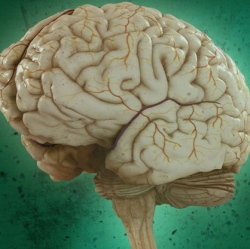
Karolinska Institute has evaluated a new Alzheimer’s therapy in which the patients receive an implant that stimulates the growth of a certain type of nerve cell. The results, which are published in the scientific journal Alzheimer’s & Dementia, suggest that the introduction of a nerve growth factor can prevent neuronal degradation in patients.
Patients with Alzheimer’s disease suffer a selective and early breakdown of so called cholinergic nerve cells, which require a specific nerve growth factor (NGF), essentially a group of proteins necessary for cell growth and survival, to function. As NGF levels decline, the cholinergic nerve cells begin to degrade and the patient’s condition slowly deteriorates.
In an attempt to curb the breakdown of the cholinergic nerve cells, researchers at Karolinska Institutet’s Centre for Alzheimer’s Research and their colleagues at Karolinska University Hospital’s neurosurgery clinic and the Danish biotech company NsGene introduced NGF directly into the brains of Alzheimer’s patients.
To do this, they used NGF-producing cell capsules, placing them in the basal fore-brain where the cholinergic cells reside using precision stereotactic surgery. There the capsules, which can easily be removed, release NGF to the surrounding cells in order to prevent their degradation.
The study now published in Alzheimer’s & Dementia is based on data from six Alzheimer’s patients. To gauge whether the NGF release had any effect on the cholinergic nerve cells, the researchers assayed the presence of specific markers of functioning cholinergic cells.
This cell system communicates using acetylcholine, which in turn produces an enzyme called ChAT (pronounced Cat) that is found both inside and outside the cells. The team therefore developed a method enabling them to measure ChAT in the cerebral spinal fluid for the first time.
"Our results show that when the patients received NGF, there was a significant increase in ChAT in the CSF," says Dr Taher Darreh-Shori, one of the researchers involved in the study. "The patients that exhibited this increase were also those that responded best to the treatment. Our PET scans also showed an increase in cholinergic cell activity and metabolism in the brain."
